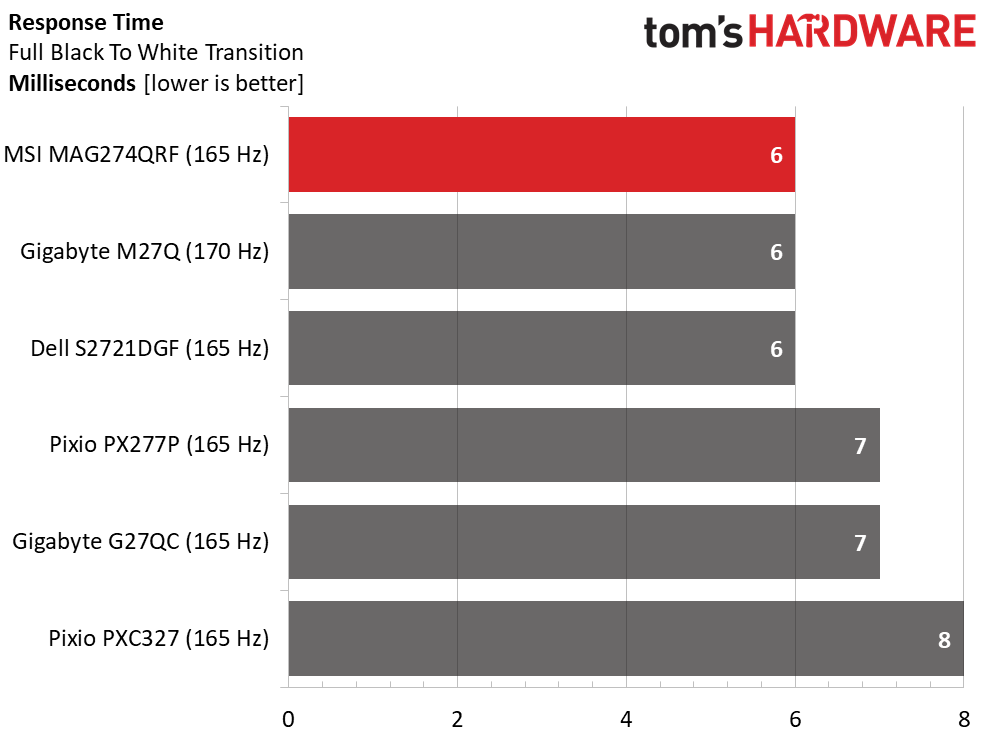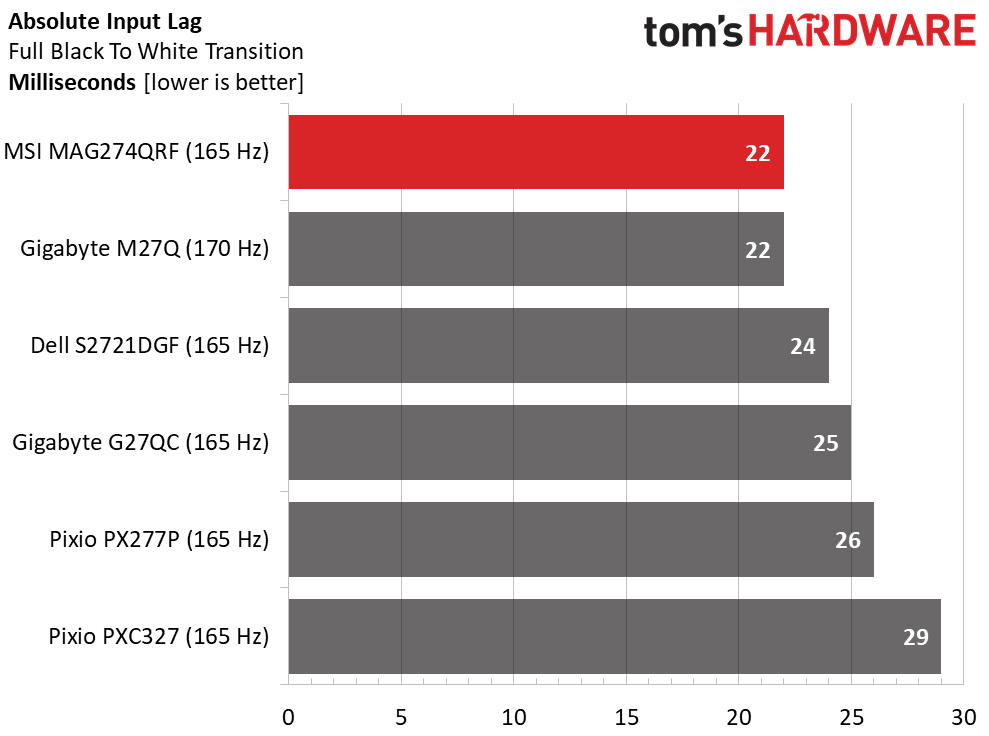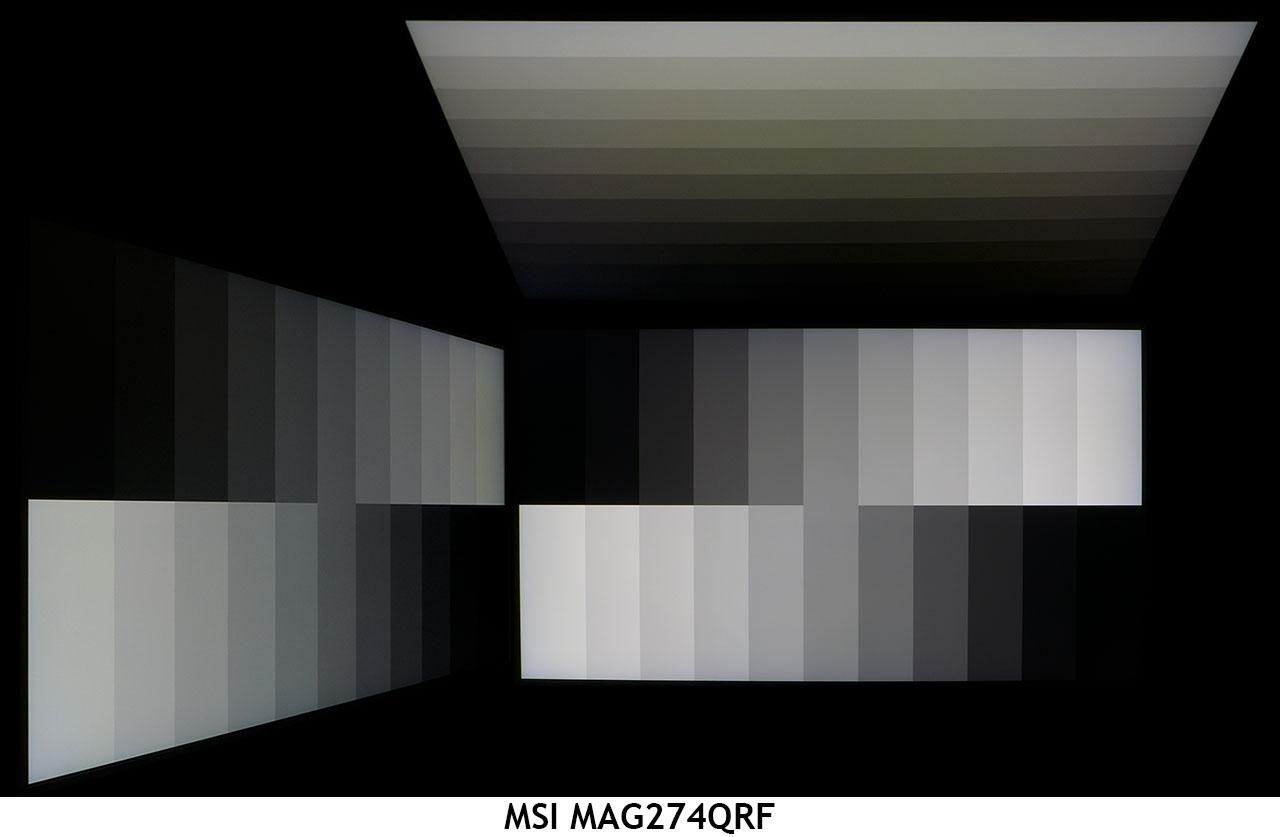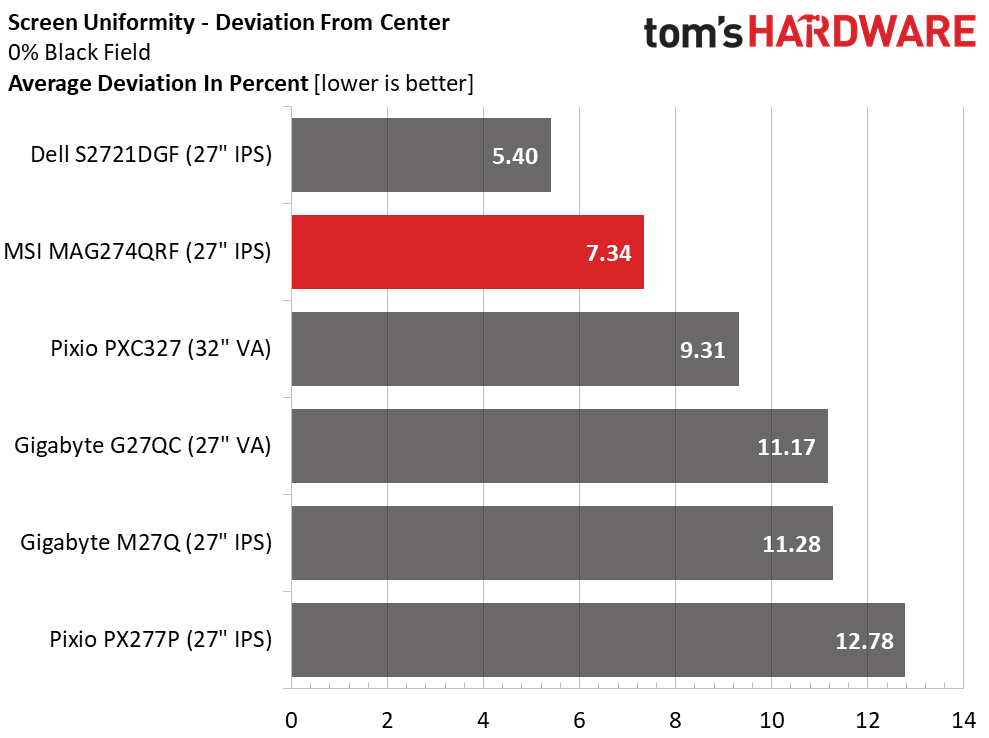Why you can trust Tom's Hardware
Viewing Angles
The MAG274QRF-QD offers the excellent viewing angles you’d expect from a premium IPS screen. Color shift to the sides is almost non-existent. We can see a slight blue tint if we look closely. Brightness decreases by around 30% but detail remains clear. The top view shows a green shift with a 40% light reduction and a washed-out look.
Screen Uniformity
To learn how we measure screen uniformity, click here.
We noted the MAG274QRF-QD’s screen quality in the ANSI test and it’s just as apparent in the uniformity measurement. 7.34% means you won’t see any bleed or glow. There are no visible hot spots in the black field pattern. Other brightness levels are also devoid of variation in either color or luminance.
Pixel Response and Input Lag
Click here to read up on our pixel response and input lag testing procedures.


We expected a group of 165 Hz monitors to have the same response time, but that’s not the case. The MAG274QRF-QD matches the 170 Hz M27Q with a 6ms score. The bottom three screens lag slightly at 7 and 8 ms. These are minor differences, but if you’re equipping yourself for eSports, no performance advantage should be ignored, no matter how small.
That quickness translates to the MSI’s ultra-low total lag of 22ms. Only a 240 Hz or faster screen will offer more speed. 165 Hz is an obvious price/performance point where you get a lot of speed for reasonable money, and it’ll take a lot more money to buy a little more speed.
Get Tom's Hardware's best news and in-depth reviews, straight to your inbox.
Current page: Viewing Angles, Uniformity, Response and Lag
Prev Page HDR Performance Next Page Conclusion
Christian Eberle is a Contributing Editor for Tom's Hardware US. He's a veteran reviewer of A/V equipment, specializing in monitors. Christian began his obsession with tech when he built his first PC in 1991, a 286 running DOS 3.0 at a blazing 12MHz. In 2006, he undertook training from the Imaging Science Foundation in video calibration and testing and thus started a passion for precise imaging that persists to this day. He is also a professional musician with a degree from the New England Conservatory as a classical bassoonist which he used to good effect as a performer with the West Point Army Band from 1987 to 2013. He enjoys watching movies and listening to high-end audio in his custom-built home theater and can be seen riding trails near his home on a race-ready ICE VTX recumbent trike. Christian enjoys the endless summer in Florida where he lives with his wife and Chihuahua and plays with orchestras around the state.
-
JoBalz ReplyKridian said:$562!? (NewEgg)
muaaahahahahahaaaaa!
I was just looking at other gaming monitors that use Quantum Dot technology displays. This one is one of the least expensive listed as using this tech. -
samopitam Is standard calibration using something like Xrite i1display calibrator enough to decrease the oversaturation and gamma of this monitor to a normal, more natural level while still covering a big percentage of the AdobeRGB gamut?Reply
When using such a calibrator (using either its own or displayCAL software) will every program then automatically use the new lower saturation level? I have no experience with calibration devices so I am just worried about color accuracy and the stated problem that colors will be oversaturated and therefore false all the time. This monitor will be used with both Mac and PC for print and web design. I'm not sure if this software just creates an ICC profile that you can choose system-wide in OS and then change easily to an ICC with more saturation, or if it does something more.
I'm interested in natural saturation levels until a project comes when I will have the need to see more of the color gamut in a graphics program. Is then all that is necessary to choose an AdobeRGB ICC profile in a graphics program like Adobe to view more colors or will the monitor calibration that lowered the saturation prevent you from ever seeing those colors unless you recalibrate? -
Maverick110 Does the Optix MAG274QRF-QD have a DisplayPort 1.2a port or a DisplayPort 1.4? The MSI product specifications page has a DP1.2a. The MSI store page specification section has DP1.4. It's just a bit confusing.Reply

